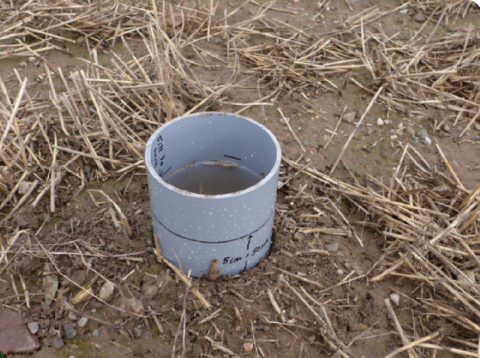This straightforward measure can indicate the health of your soil by highlighting compaction issues; the level of soil aggregation; and provide comparisons between areas of the farm that are managed differently.
High infiltration rates also indicate that a soil is more likely to cope with extreme weather events, as the soil can absorb bursts of heavy rainfall. Therefore, measuring soils and promoting good infiltration through management techniques can reduce runoff, improving water quality and reducing the risk of flooding.
Equipment required
- 110mm soil pipe or similar (available from builders merchants and DIY stores)
- A plank of wood and mallet
- Timer or stopwatch
- Water
- Permanent marker pen, paper and pen
Steps to take
- Measure 5cm and 10cm from end of pipe and mark
- Clear residue from the soil surface
- Using the mallet and wood, drive the pipe into the soil surface, to the 5cm line
- Pour water up to the 10cm line and start the timer
- Record the time taken for the water to drain away
- Repeat in areas under different management
This soil test replicates a rainfall event of 50mm. When carrying out the test, it is worth considering recent rainfall and how wet your soil is. Water infiltration is usually rapid when water is first applied, but begins to slow as the water in the soil increases.
Factors effecting infiltration
- A lack of surface materials can cause soils to develop a crust, known as ‘capping’.
- Soil texture (sand/silt/clay content) can cause differences in a soils hydraulic activity, effecting infiltration.
- Physical properties including soil aggregation, compaction and existing soil water content can all influence infiltration rate.
Step by step guide in photos:
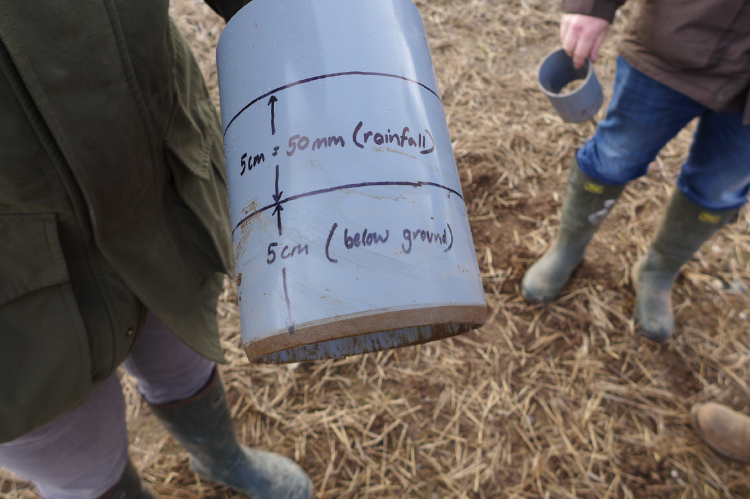
- 1. Measure and mark lines on pipe
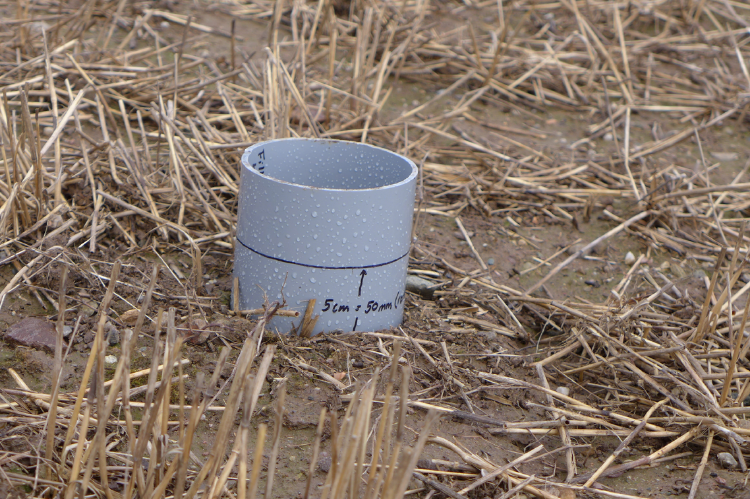
- 2. Remove residue on soil surface and hit pipe 5cm into ground.
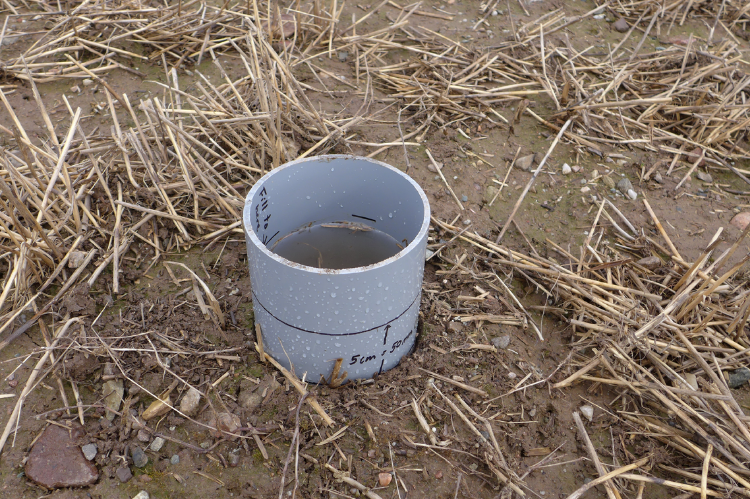
- 3. Fill with water to the 10cm line and start timer.
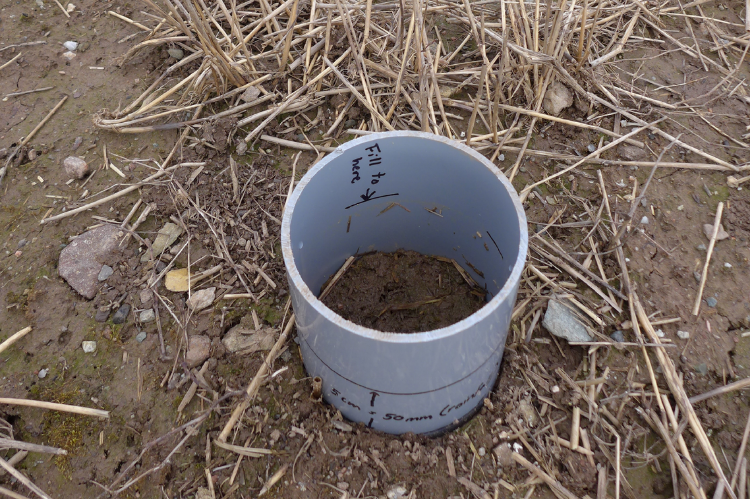
- 4 Stop timer once water drained and record results.
-
Results

Poorly draining soils with structural issues are less likely to return target yields or cope with extreme weather events. For more information on soil management, see the Valuing Your Soils booklet and range of practical guides on our Soils, fertilisers & manures page.
Download a PDF Guide Below.

